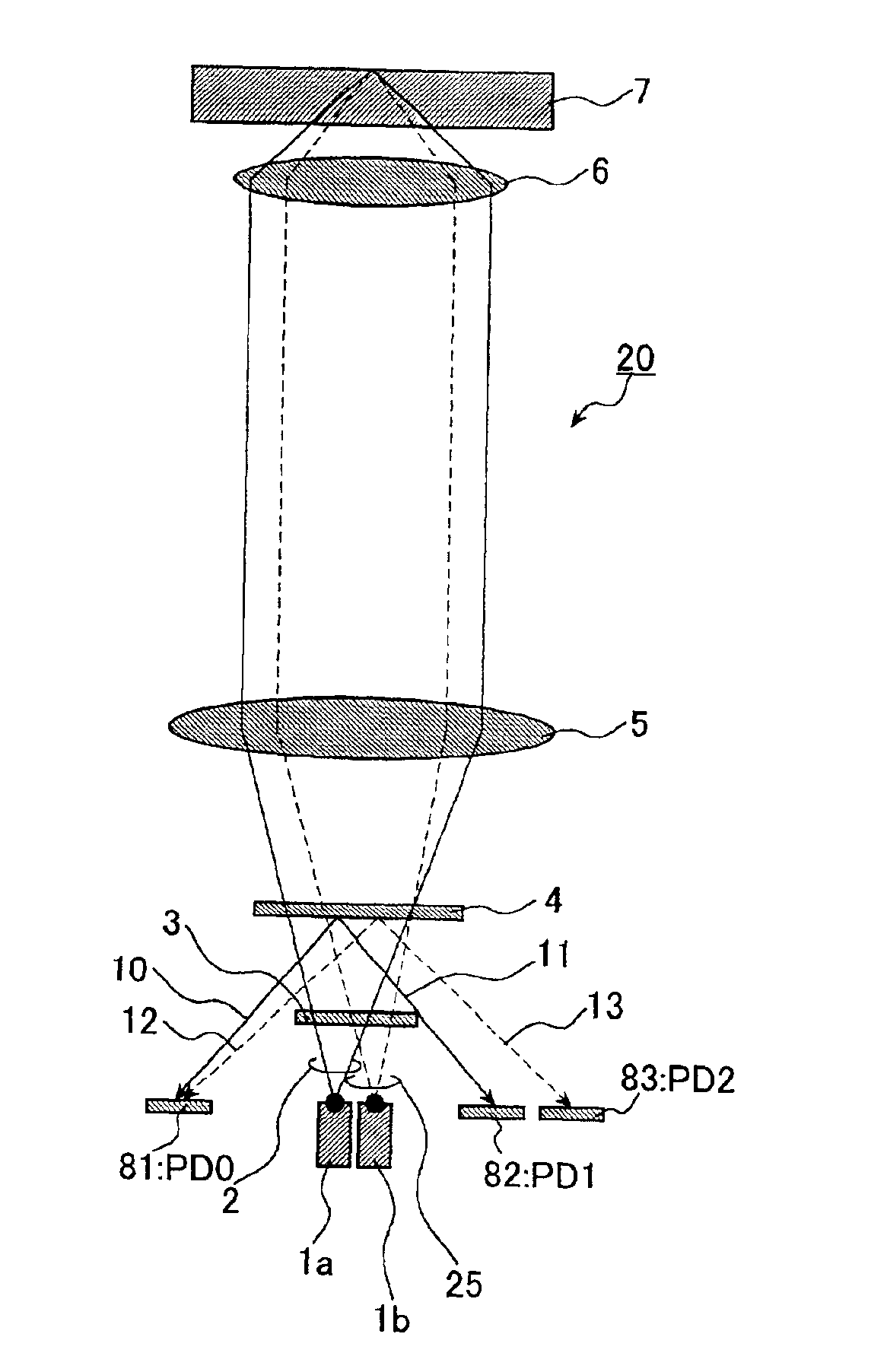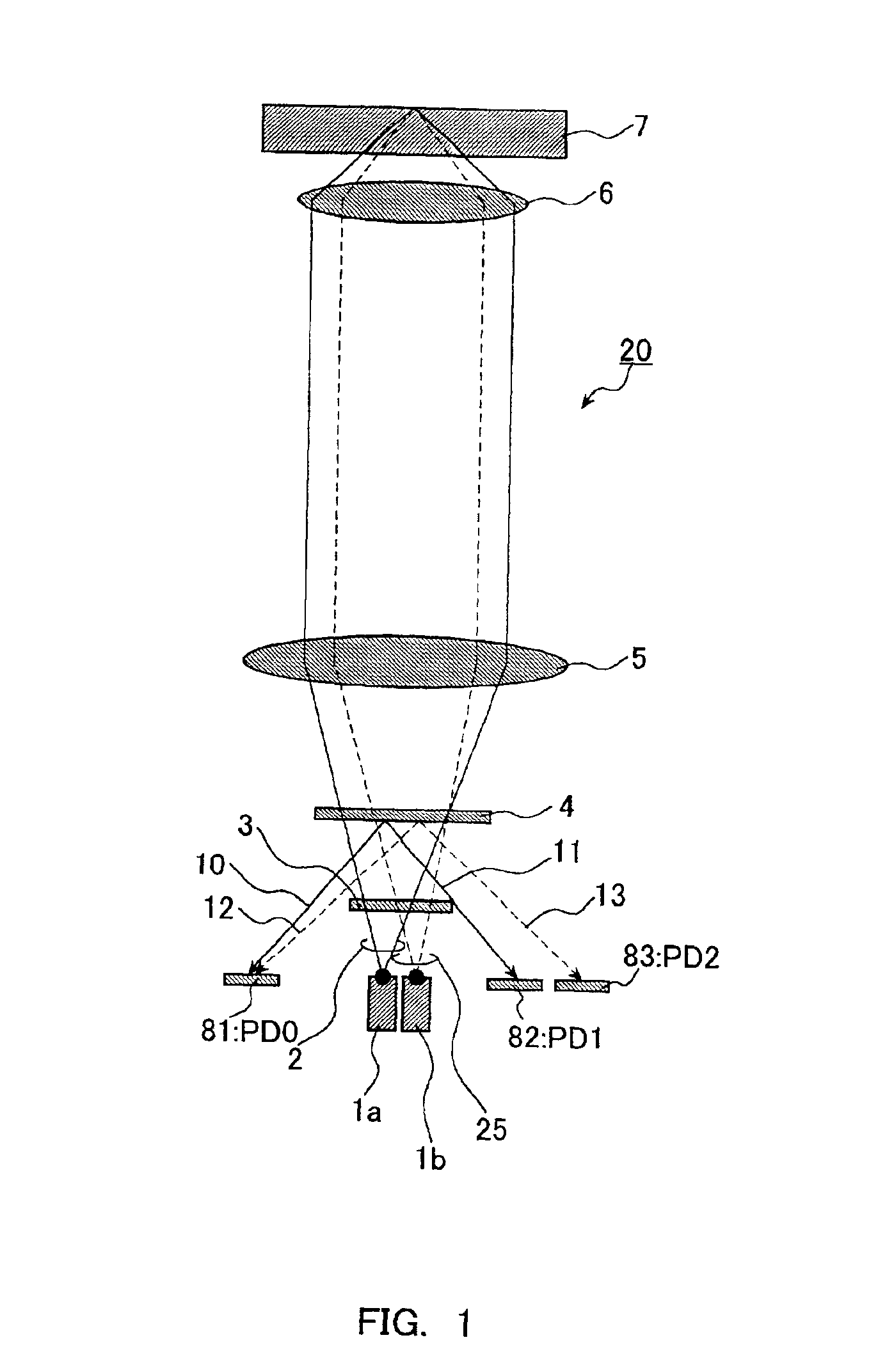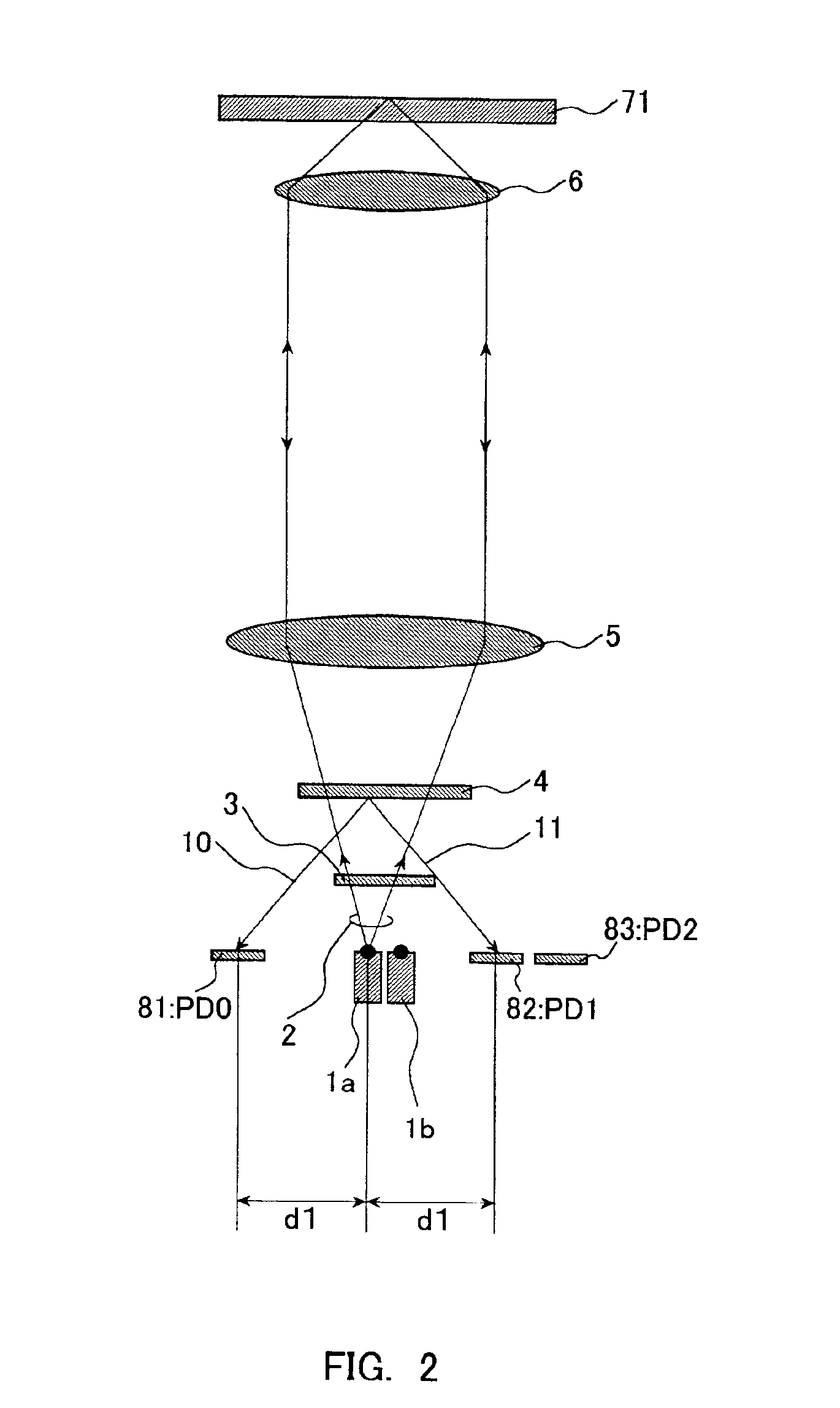Optical pick-up, optical disk apparatus and information processing apparatus
a technology of optical disk and optical pickup, applied in the direction of digital signal error detection/correction, instruments, recording signal processing, etc., can solve the problems of te signal offset, weak te signal strength, and detection of focus error signals, so as to reduce the manhour for assembling steps, and prevent the offset of the focus error signal
- Summary
- Abstract
- Description
- Claims
- Application Information
AI Technical Summary
Benefits of technology
Problems solved by technology
Method used
Image
Examples
embodiment 1
[0085]FIG. 1 is a view showing a configuration of an optical pick-up according to a first embodiment of the present invention. In FIG. 1, a semiconductor laser light source includes a red laser 1a and an infrared laser 1b. Reference numerals 81, 82 and 83 denote optical detecting portions (PD0, PD1 and PD2) carrying out a photoelectric conversion, that is, receiving light beams and converting the received light beams into electric signals such as electric current. Reference numeral 3 denotes a grating; and 4 denotes a diffractive element, and as the diffractive element, an optical element in which a phase or a transmissivity having a periodical structure is used. In the diffractive element 4, the period or direction, that is, a grating vector, may vary depending on the parts. A typical example of the diffractive element is a hologram, for example, a phase-type hologram. In the explanation below, the diffractive element will be explained as taking a hologram 4 as an example. Referenc...
second embodiment
(Second Embodiment)
[0106]FIGS. 5 and 6 show a configuration of a thin optical pick-up by using a rising mirror of the second embodiment. FIG. 5 shows a case where information is reproduced on a DVD optical disk by using an emitted red light beam 2. FIG. 6 shows a case where information is reproduced on a DVD optical disk by using an emitted infrared light beam 25.
[0107]The light collimated by the collimating lens 5 into nearly parallel beam of light is reflected by the rising mirror 17 and changes the direction of moving, thereby reducing the size (thickness) of the optical pick-up in the direction perpendicular to the plane of the optical disk 7.
[0108]As shown in FIG. 5, a wavelength selection aperture 18 just serves as a transparent substrate with respect to the red light beam 2 and does not act on it. As shown in FIG. 6, the wavelength selection aperture 18 shields light beams distant from the optical axis with respect to the infrared light beam 25. This wavelength selection aper...
third embodiment
(Third Embodiment)
[0111]FIG. 7 shows a photodetector 8 according to a third embodiment. The photodetector 8 has a configuration in which the red laser 1a and the infrared laser 1b, and the photo detecting portions 81 to 83 are integrated. The photodetector 8 includes photo detecting portions 81 to 83 formed on a silicone substrate, etc. By integrating all of the photo detecting portions on one substrate like this, it is possible to reduce the manhours for electrical connection and to determine the relative positions between the photodetectors with high precision. Reference numeral 1 denotes a laser light source such as a semiconductor laser in which a red laser and an infrared laser are integrated monolithically. By forming lasers having two different wavelengths on one chip of the semiconductor laser light source 1 like this, the distance between the light emitting spot of the red laser and the light emitting spot of the infrared laser can be set precisely in a μm order or sub μm o...
PUM
| Property | Measurement | Unit |
|---|---|---|
| wavelength | aaaaa | aaaaa |
| wavelength | aaaaa | aaaaa |
| wavelength λ2 | aaaaa | aaaaa |
Abstract
Description
Claims
Application Information
 Login to View More
Login to View More - R&D
- Intellectual Property
- Life Sciences
- Materials
- Tech Scout
- Unparalleled Data Quality
- Higher Quality Content
- 60% Fewer Hallucinations
Browse by: Latest US Patents, China's latest patents, Technical Efficacy Thesaurus, Application Domain, Technology Topic, Popular Technical Reports.
© 2025 PatSnap. All rights reserved.Legal|Privacy policy|Modern Slavery Act Transparency Statement|Sitemap|About US| Contact US: help@patsnap.com



